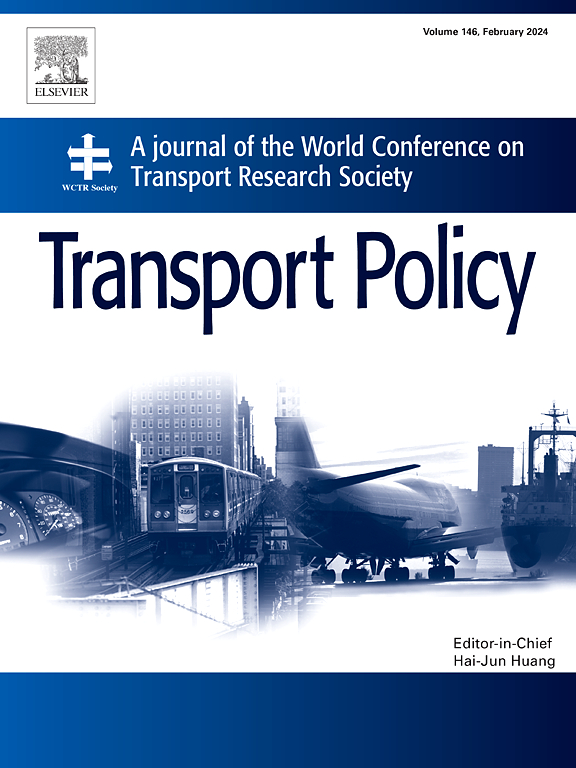Understanding the urban mobility challenge: Why shared mobility providers fail to attract car drivers
IF 6.3
2区 工程技术
Q1 ECONOMICS
引用次数: 0
Abstract
Reducing urban car traffic has become a global policy objective. A vital element in achieving this objective is the availability of shared mobility providers offering sustainable alternative travel modes such as micromobility, carsharing, and ridehailing. Despite policy and industry efforts, shared mobility options have failed to change the travel patterns of current car users. We explore this urban mobility challenge through an empirical study of 807 urban travelers. Our results show that car drivers estimate travel costs conceptually rather than rationally and consider both trip purpose and length. In particular, car users perceive longer and recreational trips as cheaper per distance driven than shorter and work-related trips. A segmentation analysis reveals that habitual and technology-averse car drivers are particularly susceptible to this skewed cost perception, unlike more frequent transit users. Embedding these results in a case study of current shared mobility options shows that these options are ill-adjusted to the preferences of car travelers but more attractive to current transit users, potentially leading to cannibalization. Based on these findings, we outline several strategies for mobility providers and policymakers to attract car drivers to shared mobility options, thereby contributing to solving the urban mobility challenge.
了解城市交通面临的挑战:共享出行服务提供商为何无法吸引汽车驾驶者
减少城市汽车交通量已成为一项全球政策目标。实现这一目标的关键因素是提供可持续替代出行方式的共享出行服务提供商,如微型交通、汽车共享和打车服务。尽管政策和行业都做出了努力,但共享交通方案未能改变当前汽车用户的出行模式。我们通过对 807 名城市旅行者进行实证研究,探讨了城市交通面临的这一挑战。我们的研究结果表明,汽车驾驶者会从概念上而非理性地估算出行成本,并同时考虑出行目的和时间长度。特别是,与短途和工作相关的旅行相比,汽车用户认为较长的休闲旅行每行驶一段距离的成本更低。细分分析表明,习惯性和技术厌恶型汽车驾驶者特别容易受到这种偏差成本观念的影响,这一点与更频繁的公交用户不同。将这些结果纳入对当前共享交通方案的案例研究表明,这些方案不符合汽车旅行者的偏好,但对当前公交用户更具吸引力,可能会导致蚕食。基于这些发现,我们为交通服务提供商和政策制定者概述了几项策略,以吸引汽车驾驶者选择共享交通方案,从而为解决城市交通难题做出贡献。
本文章由计算机程序翻译,如有差异,请以英文原文为准。
求助全文
约1分钟内获得全文
求助全文
来源期刊

Transport Policy
Multiple-
CiteScore
12.10
自引率
10.30%
发文量
282
期刊介绍:
Transport Policy is an international journal aimed at bridging the gap between theory and practice in transport. Its subject areas reflect the concerns of policymakers in government, industry, voluntary organisations and the public at large, providing independent, original and rigorous analysis to understand how policy decisions have been taken, monitor their effects, and suggest how they may be improved. The journal treats the transport sector comprehensively, and in the context of other sectors including energy, housing, industry and planning. All modes are covered: land, sea and air; road and rail; public and private; motorised and non-motorised; passenger and freight.
 求助内容:
求助内容: 应助结果提醒方式:
应助结果提醒方式:


